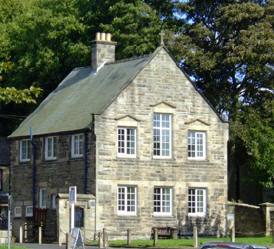Parish Hall
The Parish Hall, next door to All Saints Church, was built in 1908 and stands on the site of the Three Half Moons Public House.
As major
focal point of the village, the inn
hosted meetings, courts, excise sittings
and parish business.
 It was here in 1715
that the Earl of Derwentwater and supporters of the Jacobite Rebellion stayed on their
fateful journey to disaster.
It was here in 1715
that the Earl of Derwentwater and supporters of the Jacobite Rebellion stayed on their
fateful journey to disaster.
From this spot the
mail coach started its daily run to Morpeth and passengers wishing to travel entered their
names on the coach slate at least three days in advance to ensure a seat. It is said that
a letter posted here in the morning could reach Durham City by the end of the
day. Quite an achievement in the 1880's!
The hall was built for the C of E Church as a Mission House with the foundation stone laid by Mrs Young who had given Church House to the Newcastle Diocesan Society.
It has been in continual use ever since. In the early 1960's the
upstairs was used as an additional school room prior to the construction of the Middle
School. And today it is used for church and social functions.
The Magistrates Court and parish business was conducted on this spot for over 200 years.
Built into the arch at the side is the ancient lintel of the inn's front door and in the nearby cemetery a small window from the Three Half Moons is imbedded in the wall.
Next door to the Parish Hall is Church House